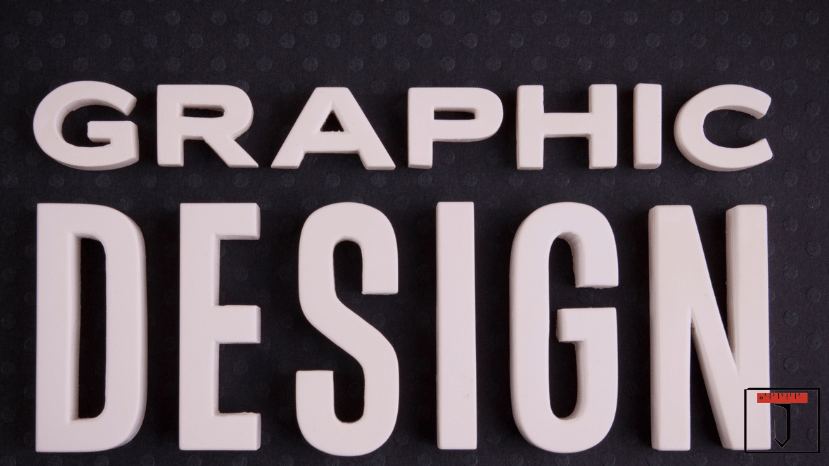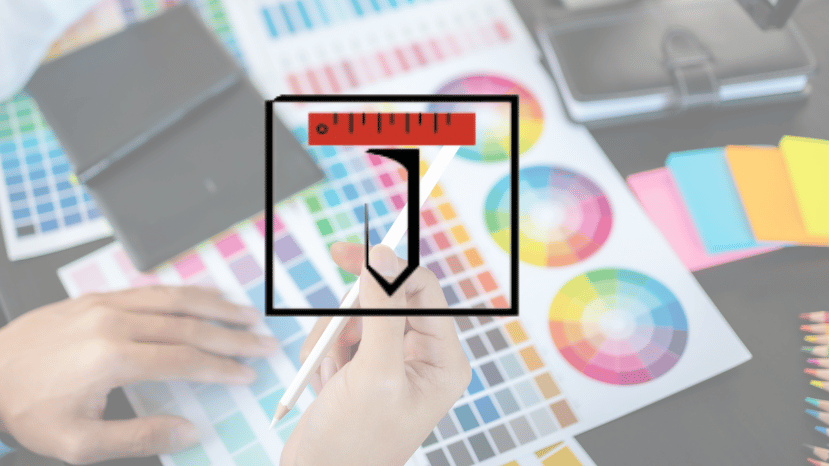
Table of Contents
Is Doing Graphic Designing Course In 2024 Worth It or Not ?
In today’s creative landscape, a graphic design course in 2024 can be absolutely worth it, especially if you consider the concept of Creativity as a Service. Here’s why:
Strong Demand for Design Skills:
The demand for skilled graphic designers is on the rise. Businesses of all sizes require visual communication to market their products, services, and brand stories.
The digital age has further amplified this need, with social media, web design, and mobile app design all requiring graphic design expertise. So, with a solid foundation in design principles and the ability to solve problems creatively, you’ll be well-positioned to land rewarding opportunities.
A design course will equip you with the fundamentals (elements and principles) that form the core of effective visual communication.
You’ll master how to use design elements like lines, shapes, colors, typography, and images to create layouts that are clear, functional, and visually engaging.
Additionally, you’ll learn about design principles like balance, hierarchy, contrast, repetition, and alignment, which dictate how these elements are arranged to create a cohesive and impactful design.
But a good course will likely go beyond just technical skills and delve into Creativity as a Service.
This means you’ll develop your creative problem-solving abilities and learn to approach design from a strategic perspective. You’ll gain expertise in:
Concept Development: Brainstorming creative ideas and crafting a visual identity that aligns perfectly with the client’s brand message and target audience.
This might involve developing unique concepts, mood boards, and design options for the client to choose from.
Strategic Visual Communication: Creatively tackling challenges and crafting visual solutions that effectively communicate the client’s message.
This could involve designing marketing materials, user interfaces, or branding elements that not only look great but also strategically convey the intended message to the target audience.
Trend Awareness & Design Innovation: Staying informed about current design trends and strategically incorporating them into the client’s project while maintaining a distinct and memorable style.
This ensures the design feels fresh and relevant while staying true to the brand’s core identity.
By honing these skills, you’ll transform from a technician into a creative problem-solver, a valuable asset in today’s design marketplace.
What Is Graphic Designing Course?
Graphic design is about using creativity to successfully communicate ideas, not only about knowing how to utilize software.
Enrolling in a graphic design course may be a game-changer for anyone, whether they are a newbie trying to dabble in the field or an experienced professional looking to hone their skills.
These courses help you develop a strong skill set by nurturing your creativity in addition to teaching you the technical parts of design.
These five graphic design courses are sure to stimulate and advance your artistic endeavors.
1. Fundamentals of Graphic Design
Every designer uses the foundations of graphic design as the fundamental building blocks to create effective and visually appealing communication. However, being successful in today’s design environment calls for more than simply technical competence. Let’s examine the idea of creativity as a service and go deeper into these essential principles: Every designer uses the foundations of graphic design as the fundamental building blocks to create effective and visually appealing communication. However, being successful in today’s design environment calls for more than simply technical competence. Let’s examine the idea of creativity as a service and go deeper into these essential principles.

Elements: These are the essential components: images, typography, colors, forms, and lines. Developing a mastery of these components is essential to producing compositions that are visually captivating. For example, lines can be utilized to divide pieces, direct the viewer’s eye, or convey movement. Shapes can be used to define a brand identity, evoke feelings, or symbolize items. A solid grasp of color theory enables designers to employ color schemes that direct viewer attention, elicit particular feelings, and affect brand perception. Clarity of communication, brand voice, and visual hierarchy are all greatly aided by typography, the art of arranging typefaces. Last but not least, visuals—pictures, photos, and illustrations—may convey narratives, offer depth, and emotionally engage viewers.
Principles: These are the driving forces for the arrangement of the components. Balance, hierarchy, contrast, repetition, and alignment are a few important ideas. In a design, balance fosters stability and order. Information is ranked in a hierarchy to direct the viewer’s attention to the most crucial parts first. Elements stand out and gain visual attention from contrast. In a design, repetition creates rhythm and coherence. A neat and orderly arrangement is guaranteed by alignment. Designers can produce layouts that are aesthetically beautiful, functional, and clear by comprehending and putting these principles into practice.

2. Adobe Photoshop Mastery
Adobe Photoshop is a vital tool in the graphic designer’s arsenal, offering endless possibilities for image editing and manipulation.
Mastering Photoshop allows you to bring your creative visions to life with precision and finesse. In this course, you’ll learn advanced techniques such as photo retouching, compositing, and special effects.
By unlocking the full potential of Photoshop, you’ll have a powerful tool at your disposal to unleash your creativity and create stunning visuals.
1. Understanding the Power of Layers:
Layers form the backbone of Photoshop, allowing designers to stack, edit, and manipulate elements with precision.
In this course, you’ll explore the versatility of layers, learning advanced techniques such as layer masks, adjustment layers, and blending modes.
Understanding the intricacies of layers empowers you to create complex compositions seamlessly, giving depth and dimension to your designs.
2. Mastering Selection Tools:
Selection tools are the key to isolating and manipulating specific areas within an image.
Adobe Photoshop offers a diverse range of selection tools, from basic marquee selections to advanced techniques like the Pen Tool and Quick Mask.
This course will teach you how to leverage these tools effectively, enabling you to extract subjects from their backgrounds, create intricate masks, and composite multiple elements seamlessly.
3. Creative Image Editing Techniques:
Image editing is at the core of Photoshop’s functionality, allowing designers to retouch, manipulate, and enhance photographs with precision.
In Adobe Photoshop Mastery, you’ll learn advanced editing techniques such as frequency separation, dodge and burn, and content-aware fill.
These techniques enable you to transform ordinary images into extraordinary works of art, pushing the boundaries of creativity and visual storytelling.
4. Designing with Brushes and Textures:
Brushes and textures add depth and texture to your designs, lending them a unique and tactile quality.
In this course, you’ll explore Photoshop’s vast library of brushes and textures, learning how to customize them to suit your artistic vision.
Whether you’re painting digital illustrations or adding subtle textures to photographs, mastering brushes and textures opens up a world of creative possibilities, allowing you to imbue your designs with personality and style.
5. Leveraging Filters and Effects:
Filters and effects are powerful tools for adding mood, atmosphere, and visual interest to your designs.
From subtle adjustments to dramatic transformations, Adobe Photoshop offers a plethora of filters and effects to explore.
In Adobe Photoshop Mastery, you’ll learn how to use filters creatively, experimenting with effects like blur, distortion, and stylization.
By mastering filters and effects, you’ll be able to infuse your designs with a unique and captivating aesthetic, setting them apart from the ordinary.
3. iIlustrator for Vector Graphics:
Scalability and versatility are two features that make vector graphics invaluable for typography, drawings, and logo design.
The program of choice for producing vector-based artwork is Adobe Illustrator, which can be mastered to unleash a creative universe of possibilities.
This course explores Illustrator’s features and tools, showing you how to make detailed designs with clean, sharp edges and lines. You may convey your creativity in a clear and powerful way by developing your vector graphics skills.
4. Typography and Layout Design:
Typography plays a crucial role in Graphic Design, shaping the visual identity of a piece and influencing how information is perceived. This course explores the art of typography, covering topics such as font selection, spacing, hierarchy, and legibility.
Additionally, it delves into layout design principles, teaching you how to arrange visual elements in a harmonious and engaging manner. By mastering typography and layout design, you’ll have the ability to create compelling compositions that captivate and communicate effectively.


Leave a Reply
You must be logged in to post a comment.